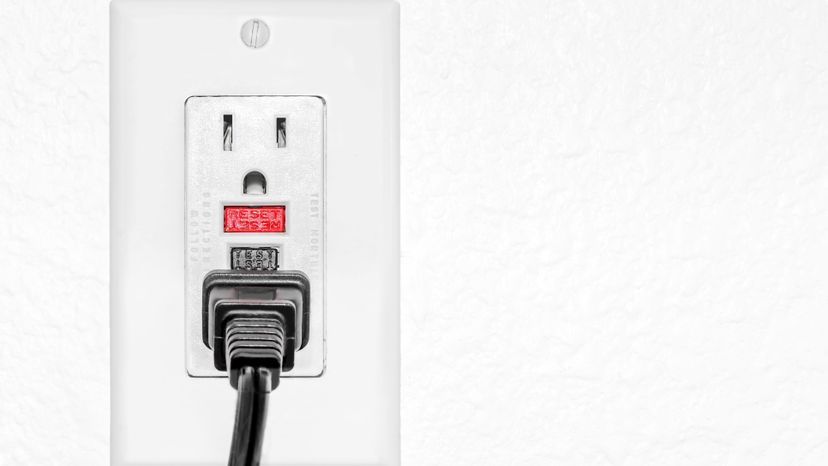
Every year, hundreds of Americans die due to electrical accidents called electrocution – death caused by electric shock. Sometimes electrocution happens in utility and construction incidents, but these tragic accidents happen in homes, too. Before the widespread adoption of GFCI (ground-fault circuit interrupter) outlets, around 800 people died annually in the United States. Now, thanks largely to the proliferation of GFCI technologies, particularly in areas near water, such as bathroom sinks or in places exposed to rain or standing water, that number has dropped to around 200 deaths per year [sources: Nickel Electric, Fish, at al.].
In short, GFCI outlets exist to protect people from electrical shock — it is completely different from a house fuse. The idea behind a fuse is to protect a structure from an electrical fire. If the hot wire were to accidentally touch the neutral wire for some reason (say, because a mouse chews through the insulation, or someone drives a nail through the wire while hanging a picture, or the vacuum cleaner sucks up an outlet cord and cuts it), an incredible amount of current will flow through the circuit and start heating it up like one of the coils in a toaster. The fuse heats up faster than the wire and burns out before the wire can start a fire. Catastrophe averted.
Advertisement
Unlike a home's fuse, the GFCI is integrated in the outlet itself. When you plug in an appliance, such as a hair dryer, the GFCI outlet monitors the amount of power going to the device. If you accidentally drop the appliance into sink full of water, the GFCI detects the interruption in current and cuts the power ... and possibly saves your life.
So how do you know if you're looking at an outlet equipped with GFCI capabilities? You'll see a Test and a Reset button (and perhaps an indicator light) built right into the outlet.
When you view a normal 120-volt outlet in the United States, there are two vertical slots and then a round hole centered below them. The left slot is slightly larger than the right. The left slot is called "neutral," the right slot is called "hot" and the hole below them is called "ground." If an appliance is working properly, all electricity that the appliance uses will flow from hot to neutral. A GFCI monitors the amount of current flowing from hot to neutral. If there is any imbalance, it trips the circuit. The GFCI senses a mismatch as small as 4 or 5 milliamps, and it can react as quickly as one-thirtieth of a second. That's a key specification, because at around 10 milliamps, human muscles "freeze" from electrical overload, meaning that you're unable to let go of an object that's causing a shock; just two seconds at that level of current can cause death [source: ELCOSH].
Advertisement
